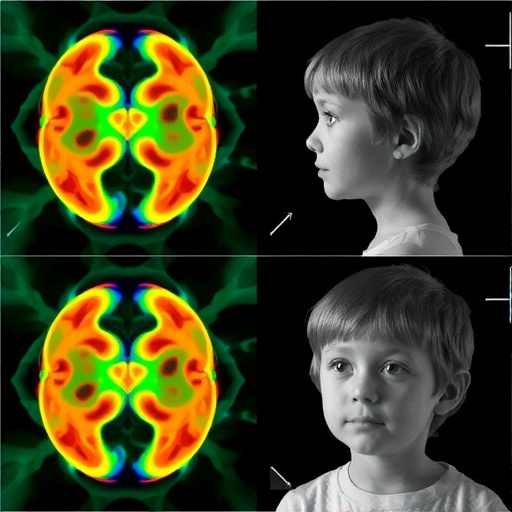In a groundbreaking advance poised to transform avian health management, researchers have demonstrated that RNA replicon vaccines can provide long-lasting protection against the deadly H5N1 avian influenza virus in a wide variety of bird species maintained in zoological settings. This innovative vaccination strategy offers a beacon of hope not only for the conservation of endangered bird populations but also for mitigating pandemic risks posed by zoonotic transmissions from avian reservoirs. The comprehensive study, recently published in Nature Communications, meticulously evaluated vaccine efficacy across 23 diverse bird species, showcasing the broad applicability of RNA replicon platforms in confronting a historically formidable pathogen.
Avian influenza H5N1 has been a persistent threat to both wild and captive bird populations globally, with fatality rates soaring above 50% in some outbreaks. The virus’s propensity for rapid mutation and wide host range complicates traditional vaccine design, which often offers limited cross-protection and requires frequent updates to keep pace with viral evolution. By contrast, RNA replicon vaccines leverage self-amplifying RNA technology that enables robust antigen expression within host cells, eliciting potent and durable immune responses without the risks associated with live-attenuated or inactivated virus preparations. This study represents one of the first large-scale applications of RNA replicon vaccination in diverse avifauna, signaling a paradigm shift in veterinary vaccine development.
The researchers employed a replicon derived from alphaviruses, engineered to express hemagglutinin (HA) proteins specifically from H5N1 avian influenza strains. HA is a critical viral surface glycoprotein involved in host cell entry and a primary target for neutralizing antibodies. Upon administration, the RNA replicon is taken up by avian host cells, where it autonomously replicates and translates the encoded HA antigen. This in situ production of viral proteins mirrors natural infection, thereby stimulating both humoral and cellular branches of the immune system with exceptional efficiency. Importantly, the replicon system lacks the viral structural genes necessary for particle formation, eliminating the possibility of vaccine-derived infection or reversion to virulence.
The study’s scope encompassed an unprecedented spectrum of species, ranging from small passerines to large raptors and waterfowl, reflecting the heterogeneity inherent in global zoological collections. Each species received intramuscular injections of the RNA replicon vaccine, followed by rigorous monitoring for clinical signs, immune parameters, and viral shedding post-experimental challenge with pathogenic H5N1 strains. Remarkably, vaccinated birds exhibited significant protection, with a dramatic reduction in morbidity and mortality compared to controls. This efficacy surpassed previously reported benchmarks of traditional vaccination efforts, underscoring the replicon’s enhanced immunogenic profile.
Kinetics of the immune responses were characterized by early onset of neutralizing antibodies as well as sustained memory B and T cell activity. The durability of protection was especially notable: follow-up assessments at six and twelve months post-vaccination revealed persistent immunity, an essential feature for zoo populations where repeated vaccination may be logistically challenging. Additionally, the vaccine induced cross-reactive immunity against divergent H5N1 clades, hinting at the potential for broader-spectrum protection against evolving viral variants. These findings hold immense promise for simplifying vaccination regimens and reducing the logistical burden on wildlife health teams.
From a safety perspective, the RNA replicon platform demonstrated an excellent profile. No adverse reactions beyond mild and transient local inflammation were observed across species, an important consideration given the sensitivity of many exotic and endangered birds to stress and invasive procedures. The replicon’s non-integrative mechanism and rapid degradation by host nucleases further bolster its safety credentials. Concurrently, the absence of adjuvants, which can sometimes provoke unwanted side effects, makes this RNA-based strategy more tolerable and animal-friendly compared to conventional vaccine formulations.
Molecular analyses provided insights into the mechanistic underpinnings of protection. Quantitative PCR and immunohistochemistry confirmed that the replicon-driven HA antigen was robustly expressed in muscle tissues without dissemination to distal organs, mitigating concerns about off-target effects. Furthermore, vaccinated birds showed elevated upregulation of interferon-stimulated genes and cytokine markers consistent with antiviral innate immune activation. This dual stimulation of innate and adaptive defenses likely contributes to the observed rapid viral clearance upon challenge, underscoring the replicon’s capacity to orchestrate a comprehensive immunological assault.
The implications for avian conservation are profound. Many species housed in zoos are threatened by habitat loss and disease outbreaks, and H5N1 remains a persistent obstacle to sustaining captive breeding programs aimed at species recovery. The ability to immunize multiple bird taxa effectively with a single vaccine platform streamlines protective efforts and enhances resilience against unforeseen influenza incursions. Moreover, controlling H5N1 in zoo environments reduces spillover risks to wild birds and ultimately to humans, contributing to global One Health strategies aimed at preempting zoonotic pandemics.
Unexpectedly, the study also revealed intriguing interspecies differences in vaccine uptake and immune magnitude, reflective of the diverse immune system architectures among avian orders. While most species responded robustly, subtle variations in antibody titers and T cell subsets suggest that tweaking dosage regimens or delivery methods could further optimize outcomes for certain taxa. These nuances highlight the importance of species-specific immunological research to maximize vaccine utility and underscore the replicon’s adaptability as a modular platform.
Furthermore, the technological advantages of RNA replicon vaccines extend beyond avian influenza. Their modular design facilitates rapid antigen swapping, offering a versatile toolkit for confronting emerging infectious diseases in wildlife. The cold-chain independence, scalability, and synthetic nature of replicon production streamline manufacturing and distribution, enabling timely responses to outbreaks. Future research could harness this platform to target other viral pathogens affecting critical wildlife or agricultural species, potentially revolutionizing veterinary and conservation vaccinology.
In regulatory and ethical terms, the adoption of RNA replicon vaccines aligns with evolving standards emphasizing animal welfare and biosafety. The minimal environmental impact due to non-replicating vaccine particles and absence of genetic modification in host genomes reduces ecological concerns. Zoos can integrate such vaccines into health management protocols with confidence that they do not pose risks to non-target species or disrupt ecological balances, fostering sustainable practices in biodiversity preservation.
From a translational perspective, this landmark study opens avenues to engineer next-generation nucleic acid vaccines tailored to zoological species’ unique immunological landscapes. The robust protection documented in this multi-species trial affirms RNA replicon technology as a potent weapon in the fight against avian influenza. It lays the groundwork for larger field trials in diverse geographies, extended monitoring of immune memory, and development of multi-valent formulations encompassing multiple influenza subtypes to preempt antigenic drift.
The scientific community also heralds this work as a major step toward One Health integration. By intervening at the wildlife interface, the RNA replicon vaccine strategy could break chains of viral transmission that have historically precipitated global flu pandemics. Conservationists, veterinarians, and public health experts are poised to collaborate in deploying such innovations to safeguard both animal and human populations, fulfilling a critical nexus in pandemic preparedness.
In sum, the pioneering application of RNA replicon vaccination in 23 zoo bird species signals a transformative chapter in avian disease control. This elegant approach combines molecular precision, immunological potency, and pragmatic applicability across taxonomic boundaries to offer durable, broad-spectrum protection against high-consequence avian influenza strains. The approach promises not only to safeguard vulnerable avian collections from devastating disease outbreaks but also to contribute meaningfully to global efforts aimed at mitigating emergent infectious threats at the human-animal-environment interface. As research advances and field implementation scales, RNA replicon vaccines may well become the cornerstone of resilient strategies protecting biodiversity and public health alike.
Subject of Research: RNA replicon vaccination against H5N1 avian influenza in diverse zoo bird species
Article Title: RNA replicon vaccination confers long-lasting protection against H5N1 avian influenza in 23 zoo bird species
Article References:
Stettler, M., Hoby, S., Wenker, C. et al. RNA replicon vaccination confers long-lasting protection against H5N1 avian influenza in 23 zoo bird species. Nat Commun 16, 9245 (2025). https://doi.org/10.1038/s41467-025-64301-5
Image Credits: AI Generated
Tags: avian influenza H5N1bird species vaccinationconservation of endangered birdsimmune response in birdsinnovative vaccination strategiespandemic risk mitigationRNA replicon vaccinesself-amplifying RNA technologyvaccine efficacy studyviral mutation challengeszoological health managementzoonotic disease prevention




